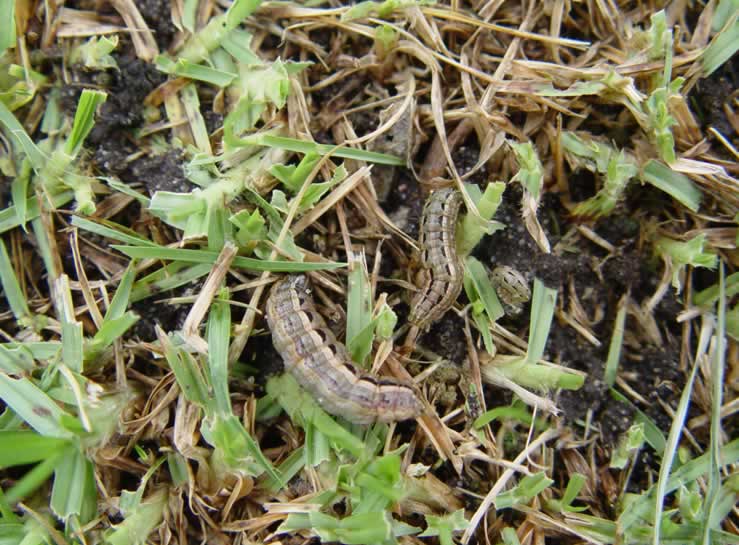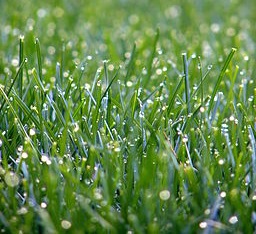Lawn Grub Killers Kill More
Lawn grubs could be one of several types of caterpillar. But, generally they look brown and striped. The little patches of eggs are often laid on dry surfeits and patios around your house.
Lawn Grub Killer, usually a chemical called Chlorpyrifos, should NOT be used in any of our gardens and I would never, ever use it where food was to be eaten.
It’s not acceptable in organic gardening at all. Allow nature to take its course in your lawn. Wasps will naturally parasitise the lawn grubs and birds will eat them. And who cares if the lawn is brown in patches? It is better to feed the wildlife with grubs than kill them!
But, the damage was done for this reader, who had applied it some time ago and was now seeing the ecological damage.

So, what to do?
Go online to check the MSDS (Material Safety Data Sheet) for the product. Once I knew what we were dealing with, it was clear. Chlorpyrifos is not a kind chemical for people or the environment. Before planting edibles in your garden, it would be wise to undergo soil and plant testing for contamination. Here is the section of the MSDS that is of particular interest to your garden.”
MSDS excerpts:
…Effects on aquatic organisms: Chlorpyrifos is very highly toxic to freshwater fish, aquatic invertebrates and estuarine and marine organisms. Cholinesterase inhibition was observed in acute toxicity tests of fish exposed to very low concentrations of this insecticide. Application of concentrations as low as 0.01 pounds of active ingredient per acre may cause fish and aquatic invertebrate deaths. Due to its high acute toxicity and its persistence in sediments, chlorpyrifos may represent a hazard to sea bottom dwellers. Smaller organisms appear to be more sensitive than larger ones.
Effects on other organisms: Aquatic and general agricultural uses of chlorpyrifos pose a serious hazard to wildlife and honeybees.
Environmental Fate:
Product Name: Searles Lawn Grub Killer
Page: 5 of 5
This revision issued: August, 2010
MATERIAL SAFETY DATA SHEET
Issued by: J.C. & A.T. Searle Pty Ltd Phone: 07 5422 3000
Poisons Information Centre: 13 1126 from anywhere in Australia, (0800 764 766 in New Zealand)
Breakdown in soil and groundwater: Chlorpyrifos is moderately persistent in soils. The half-life of chlorpyrifos in soil is usually between 60 and 120 days, but can range from 2 weeks to over 1 year, depending on the soil type, climate, and other conditions. Chlorpyrifos adsorbs strongly to soil particles and it is not readily soluble in water. It is therefore immobile in soils and unlikely to leach or to contaminate groundwater. TCP, the principal metabolite of chlorpyrifos, adsorbs weakly to soil particles and appears to be moderately mobile and persistent in soils.
Breakdown in water: The concentration and persistence of chlorpyrifos in water will vary depending on the type of formulation. The rate of hydrolysis is constant in acidic to neutral waters, but increases in alkaline waters. In water at pH 7.0 and 25°C, it had a half-life of 35 to 78 days.
Breakdown in vegetation: Chlorpyrifos may be toxic to some plants, such as lettuce. Residues remain on plant surfaces for approximately 10 to 14 days. Data indicate that this insecticide and its soil metabolites can accumulate…
and so it goes on.
All round it’s BAD NEWS. DON’T use it greenthumbs. Take it to the tip when they next have a dangerous chemicals collection and implore your local nursery not to sell it either.
And if you’re not already convinced it’s bad news, here’s a simple fact sheet for you.



